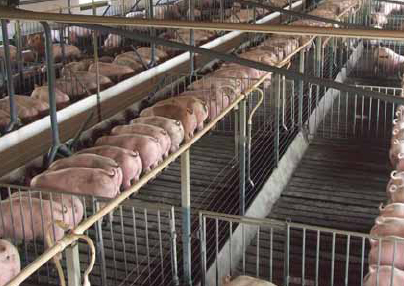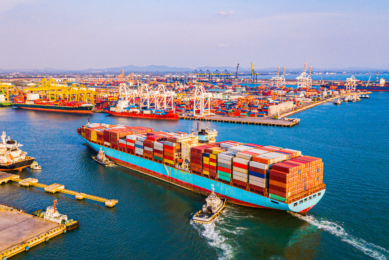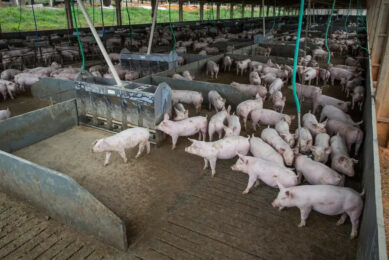Liquid feeding with a Brazilian flavour

Liquid feeding is a well-known principle in western Europe and Canada nowadays, but in Latin America, the principle has had some difficulty catching on. Over the last 15 years, the story of liquidfeeding in Brazil has become a tale of large integrators, strong feed efficiency and swill mixed with cocoa.
In Europe, liquid feeding equipment appeared nearly 40 years ago. In Brazil, however, the first computer-assisted equipment for swine liquid feeding arrived less than two decades ago. “More than 70% of Dutch farmers employ this feeding system. It answers for more than half of the European production. However, here in Brazil it is found in less than 2% of the farms,” says Wienfried Matthias Leh, partner and director of Weda, a multinational company, headquartered in Germany, that deals with high-tech equipment for pig feeding.
In Brazil, liquid feeding equipment is still rare and also geographically concentrated. According to the main companies selling them (Weda and Big Dutchman), Brazil has around 70 installed machines. Out of those, 40 are found in the Rio Verde town alone, in the state of Goiás. The state is a traditional soy, maize and sorghum producer and is not among the main swine producers in the country. Their recent production trends are impressive, however. In the last decade, producers from the state witnessed a 53% increase in the activity. The Rio Verde town saw its 104,000 herd in 1999 jump to 404,000 animals.
The reason, not only for the growth of the sector in the state, but also for the concentration of the computer-assisted liquid feeding systems is one and the same: the establishment of a huge industrial complex of Perdigão* (in Rio Verde in the late 1990s).
Liquid for all?
High investment costs, however, prove to be a reason for some hesitation for Brazilian pig farmers. Few of them can use the remote wireless connections, modern software for iPads, smartphones or palm tops in order to plan swine feeding. The technology therefore is found mainly in medium and large production units. According to Big Dutchman sales manager in Brasil, Vilceu Almeida de Oliveira, payback time is around 18 months for medium and large producers.
The modularity of the technology and its capacity to be customisable currently allows for the equipment to be suited to the needs of each farm though. Leh says, “Initial costs may be a bit higher, as with every investment in cutting-edge technology and long-lasting equipment. However, the economic advantages are clear, both in the short and the long-term, even in small production units.”
Another issue that interferes with the modernisation of swine farming in Brazil is the lack of knowledge about the products, and the frequent queries about its working and maintenance. Oliveira says, “Besides the high investment costs, producers are still a bit afraid of a technology they do not know well.”For Leh, the insecurity of producers is tied to an apprehension that such precise equipment will suddenly stop working, and the technical assistance is not able to solve it as soon as needed. “However, I have machines operating at my farms for 15 years. Within this period, there was only the natural wear of pieces, something that did not represent major nuisances. Even nowadays, they are still up-to-date, only with a natural software outdatedness.”
Experiences
What do producers think of the system after all? Paulo Sérgio da Silva Braz, manager of the Lajeado da Seriema farm in Arapoti, Paraná state, has employed the computer-assisted liquid feeding system for 17 months now. He has not faced any trouble with the equipment yet. “We are able to console our doubts with the Internet and the customer service by telephone. We have not had any serious problems.”
Overall, the problems with the technology seem to belong to the past, since both Weda and Big Dutchman emphasised the qualified service from their technical support teams both for installing and in the after-sales service.In the portfolio of the companies, one can also find new technologies which deliver high safety standards regarding equipment hygiene. These equipments employ UV light. According to the manufacturers, they are capable of destroying germs and bacteria, and also inhibiting mould and yeast growth, one of the main concerns for producers.Leh explains, “The computer-assisted liquid feeding system is controlled by a central computer, which is able to precisely determine the feed dose in each feeder, even in complex facilities with the capacity to house 10,000 animals. If, on one hand, the automation of dry feeds allows only the use of solid ingredients, on the other, one can employ the liquid feeding system with virtually any kind of feed.”
Liquid profit margins
Largely disseminated in Europe for complete cycle units, liquid feeding is mostly employed in Brazil in the finishing phase. The aim is to increase weight gain and, mainly, the profit margins of the activity as well.
Leh says, “Cost-benefit is more pronounced in farms with more than 1,000 animals in finishing phase, but, based on my own experience, I do recommend the technology for the nursery and growth phases as well.” The reduced profit margins of swine production led Arie Willem Bronkhorst, owner of the Lajeado da Seriema farm, to search for alternatives in order to increase the feed conversion of finishing pigs. Farm manager Sérgio da Silva Braz says, “With the liquid feeding, we reduced production costs by 13.63%, and the pigs reached the ideal slaughtering weight (105 kg) nine days earlier than when using dry feeds. We also managed to save 20 kg of feed per animal, and feed conversion decreased 11.7%.”To reach those conclusions, they evaluated two groups of 2,750 animals in the growing/ finishing phase, each comprised of a single lot. One group was fed with liquid feeds prepared with moist grain silage or rehydrated maize, with added vitamins and minerals premixes. The other was treated with the usual dry feeds employed in Brazil, with the same premixes. The performance was compared between 63 and up to 160 days of age, until the animals reached 105 kg.
This is the ideal slaughter weight for the production of meat which will be consumed fresh, because it has a lower fat content. Braz explains, “The animals were fed in collective feeders for 26 animals and feed and animals were both weighed daily. The liquid feeding treatment also led to a weight gain of 8.1% higher when compared to the dry-fed one.”The coupling of liquid feeding with moist grain silage also helped Leh to control feeding costs. Besides employing the computer-assisted equipment for swine liquid feeding, he also grows 60% of the maize employed in the feed on his own farm.
Owner of 14 units in Guarapuava, Paraná state, Leh owns liquid feeding equipment in three of his farms. Keen on checking production costs, he calculated his profit margins since the adoption of the first equipment, 15 years ago. “I saved R$ 2,816,160 (approximately US$ 1.7 million) in feed and labour only, and I estimate my profit margin at R$ 3,958,829 (around US$ 2.4 million) in this period.”
The costs with specialised workmanship, which is considered to be high in the Brazilian swine sector, mostly due to payroll overheads, was reduced by 25% in the Lajeado da Seriema farm, and the owner has further plans. Braz says, “We are planning to increase production in the next few months, by investing in a sow genetic supplier unit with 500 animals.”
At Wienfried farms, only one employee is needed in order to supervise the whole computer-assisted feeding system in the growth and finishing phases. All other workers are in the reproduction units. “Automation also allows the farmer to better define the time schedule for feeding the animals, without the need of workers to prepare the feed or take it to the feeders,” says Leh.
Oliveira credits the control of feeding costs to the precision of the equipment, which cuts out the feed waste that usually takes place in the transport to the barns and lack of precision of the manual dosage.
Spice it up!
In the liquid feeding system, which is nothing more than the mixture of dry feed with water, it is possible to decrease feeding costs even further. The recipe is to add to the menu some by-products of the food industry, such as whey (from the cheese industry), yeast, potato skins, remains from the biscuit/ cracker production, by-products of ethanol production, among others.
Leh says, “The use of liquid feeding was motivated not only because of the feed economy, but mostly because of the use of alternative ingredients, with lower prices. Both factors combined help to reduce feed costs, which may reach around 80% of the costs of Brazilian swine production. One can say that pigs are still fed with swill, but now with bonbons and cocoa powder, discharged by the food industry.”The by-products are employed according to the needs of each producer, given both the amount and the quality of the diet directly influence carcass quality. Liquid feeding also supplies 70% of the water daily needs of the pigs, which is another of its alleged advantages.The stage seems set for an increase use of liquid feeding in the country.Advantages seem to be high, and productions costs are heavily influenced by feeding costs. Production is largely integrated in the country. The main companies focus intensively on technology. Most also work in the chicken sector, and have profited from investments in technology. Thus, it remains to be seen if liquid feeding in Brazil will take off. Or if it will evaporate.
*Perdigão is one of the main companies in the agro-industry in the country. It is currently in a process of fusion with Sadia to become the largest meat processing company in the world, Brasil Foods. The process is still under evaluation of the Brazilian body which regulates the market.
Liquid feeding in practice Liquid feeding is prepared from a mixture of feed from the silos, which is poured in a mixing tank (1), at a predefined amount and based in data programmed in the computer, according to the number of animals to be fed.During the process, different kinds of ingredients, whether by-products or concentrated feed, are transported by screw conveyors in tubes until it reaches the tank. An electronic scale under the tank signs when the desired quantity is reached and then water or liquid by-products is added to the mixture. The feed is then sent to the feeders through pumps (2). Dosage is controlled by the opening of computer-controlled pneumatic valves, which release the predefined feed amount at each feeder, with a precision in the order of tens of grammes. Then it’s up to the pigs to take it in. (3) |











